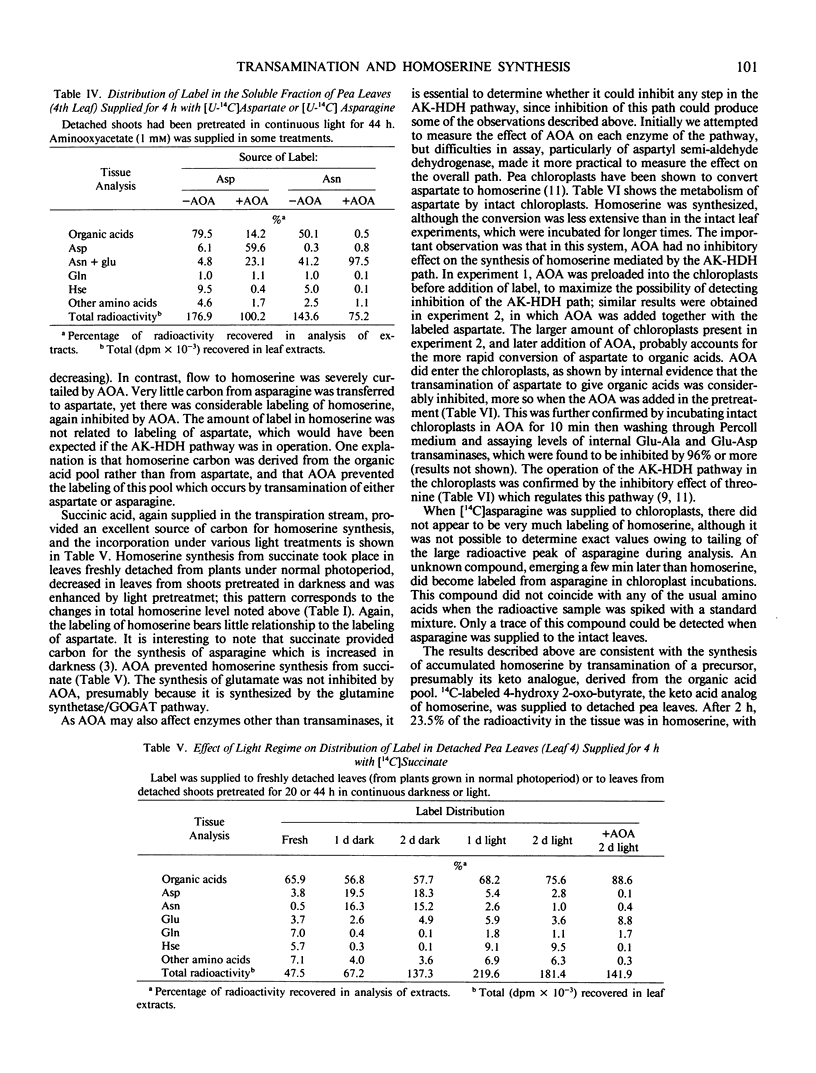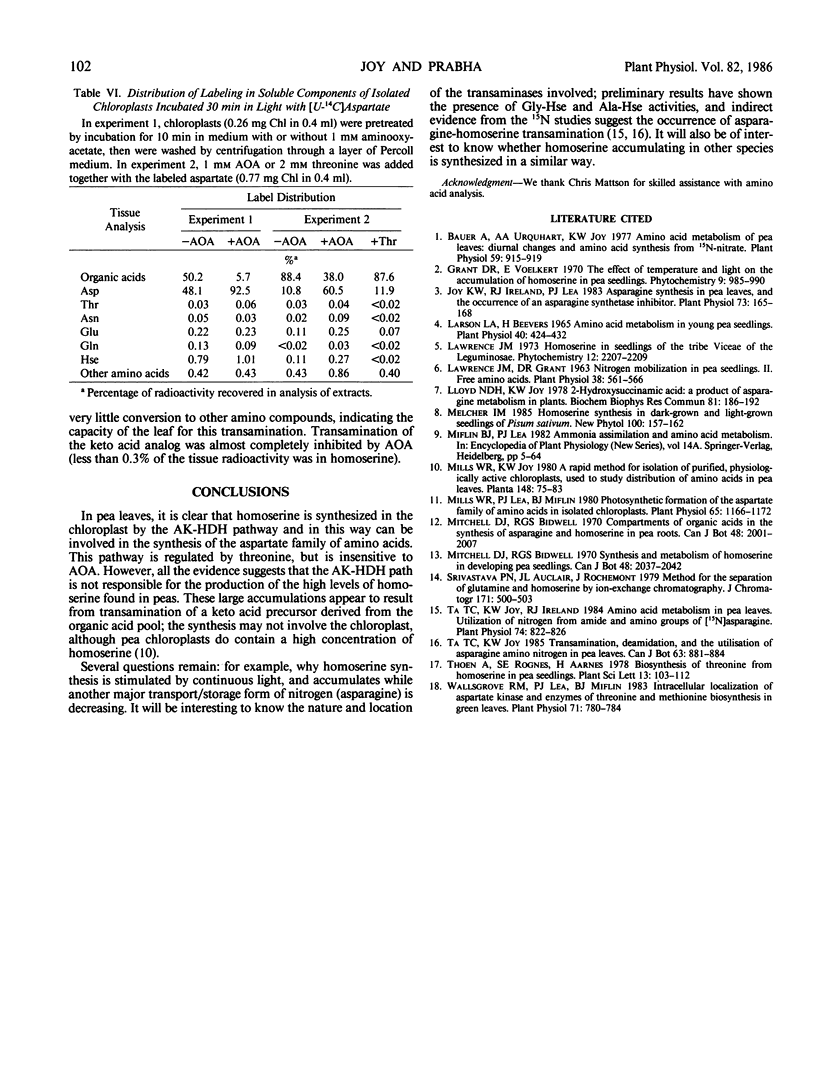Abstract
Incubation of intact pea plants (Pisum sativum), or detached shoots, in continuous light caused a substantial increase (up to 4-fold in 2 days) in levels of homoserine. Amino acids supplied to leaves in the transpiration stream enhanced the accumulation, with glutamate, aspartate, and asparagine causing similar enhancement. Aminooxyacetate (AOA), a transamination inhibitor, at 1 millimolar prevented the accumulation. 14C-labeling experiments showed that succinate was a good source of carbon for homoserine synthesis; carbon from aspartate or asparagine was also incorporated into homoserine. For each precursor, the transfer of label was prevented by AOA. The keto acid analog of homoserine was rapidly transaminated in leaves to give homoserine. The results suggest that accumulating homoserine is synthesised by transamination rather than being derived from aspartate via the aspartate kinase/homoserine dehydrogenase pathway. The latter pathway was shown to be operating in the chloroplasts, and was sensitive to threonine (but was not inhibited by AOA), suggesting that this path has a role in synthesis of aspartate-derived amino acids but is not involved in the accumulation of excess homoserine in the pea.
Full text
PDF



Selected References
These references are in PubMed. This may not be the complete list of references from this article.
- Bauer A., Urquhart A. A., Joy K. W. Amino Acid metabolism of pea leaves: diurnal changes and amino Acid synthesis from N-nitrate. Plant Physiol. 1977 May;59(5):915–919. doi: 10.1104/pp.59.5.915. [DOI] [PMC free article] [PubMed] [Google Scholar]
- Joy K. W., Ireland R. J., Lea P. J. Asparagine synthesis in pea leaves, and the occurrence of an asparagine synthetase inhibitor. Plant Physiol. 1983 Sep;73(1):165–168. doi: 10.1104/pp.73.1.165. [DOI] [PMC free article] [PubMed] [Google Scholar]
- Larson L. A., Beevers H. Amino Acid Metabolism in Young Pea Seedlings. Plant Physiol. 1965 May;40(3):424–432. doi: 10.1104/pp.40.3.424. [DOI] [PMC free article] [PubMed] [Google Scholar]
- Lawrence J. M., Grant D. R. Nitrogen Mobilization in Pea Seedlings. II. Free Amino Acids. Plant Physiol. 1963 Sep;38(5):561–566. doi: 10.1104/pp.38.5.561. [DOI] [PMC free article] [PubMed] [Google Scholar]
- Lloyd N. D., Joy K. W. 2-Hydroxysuccinamic acid: a product of asparagine metabolis in plants. Biochem Biophys Res Commun. 1978 Mar 15;81(1):186–192. doi: 10.1016/0006-291x(78)91647-9. [DOI] [PubMed] [Google Scholar]
- Mills W. R. Photosynthetic formation of the aspartate family of amino acids in isolated chloroplasts. Plant Physiol. 1980 Jun;65(6):1166–1172. doi: 10.1104/pp.65.6.1166. [DOI] [PMC free article] [PubMed] [Google Scholar]
- Ta T. C., Joy K. W., Ireland R. J. Amino Acid metabolism in pea leaves : utilization of nitrogen from amide and amino groups of [N]asparagine. Plant Physiol. 1984 Apr;74(4):822–826. doi: 10.1104/pp.74.4.822. [DOI] [PMC free article] [PubMed] [Google Scholar]
- Wallsgrove R. M., Lea P. J., Miflin B. J. Intracellular localization of aspartate kinase and the enzymes of threonine and methionine biosynthesis in green leaves. Plant Physiol. 1983 Apr;71(4):780–784. doi: 10.1104/pp.71.4.780. [DOI] [PMC free article] [PubMed] [Google Scholar]


